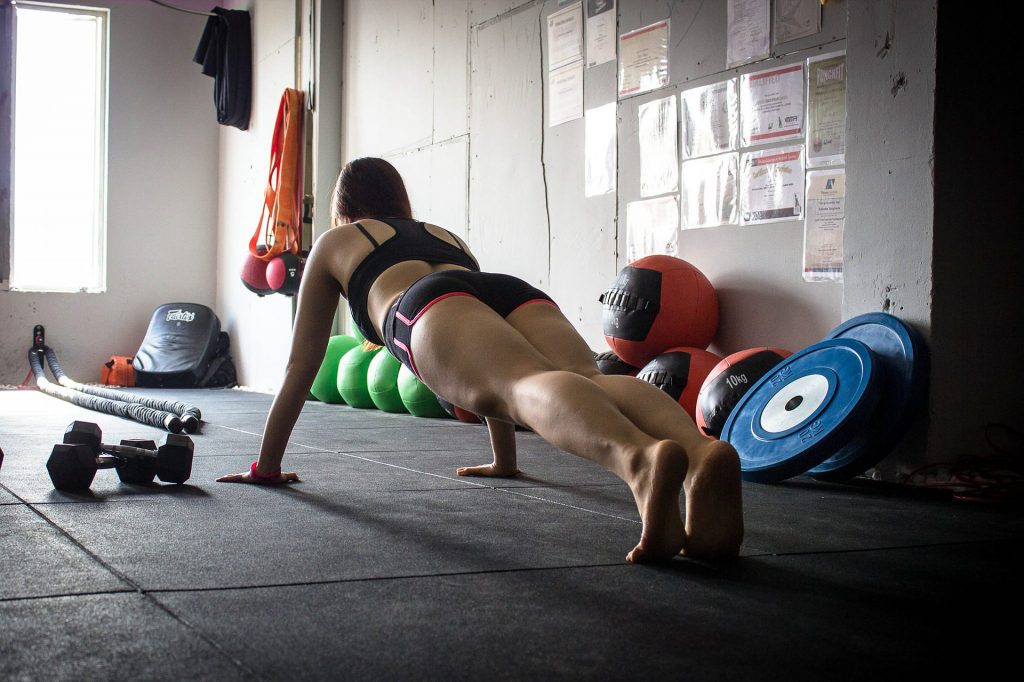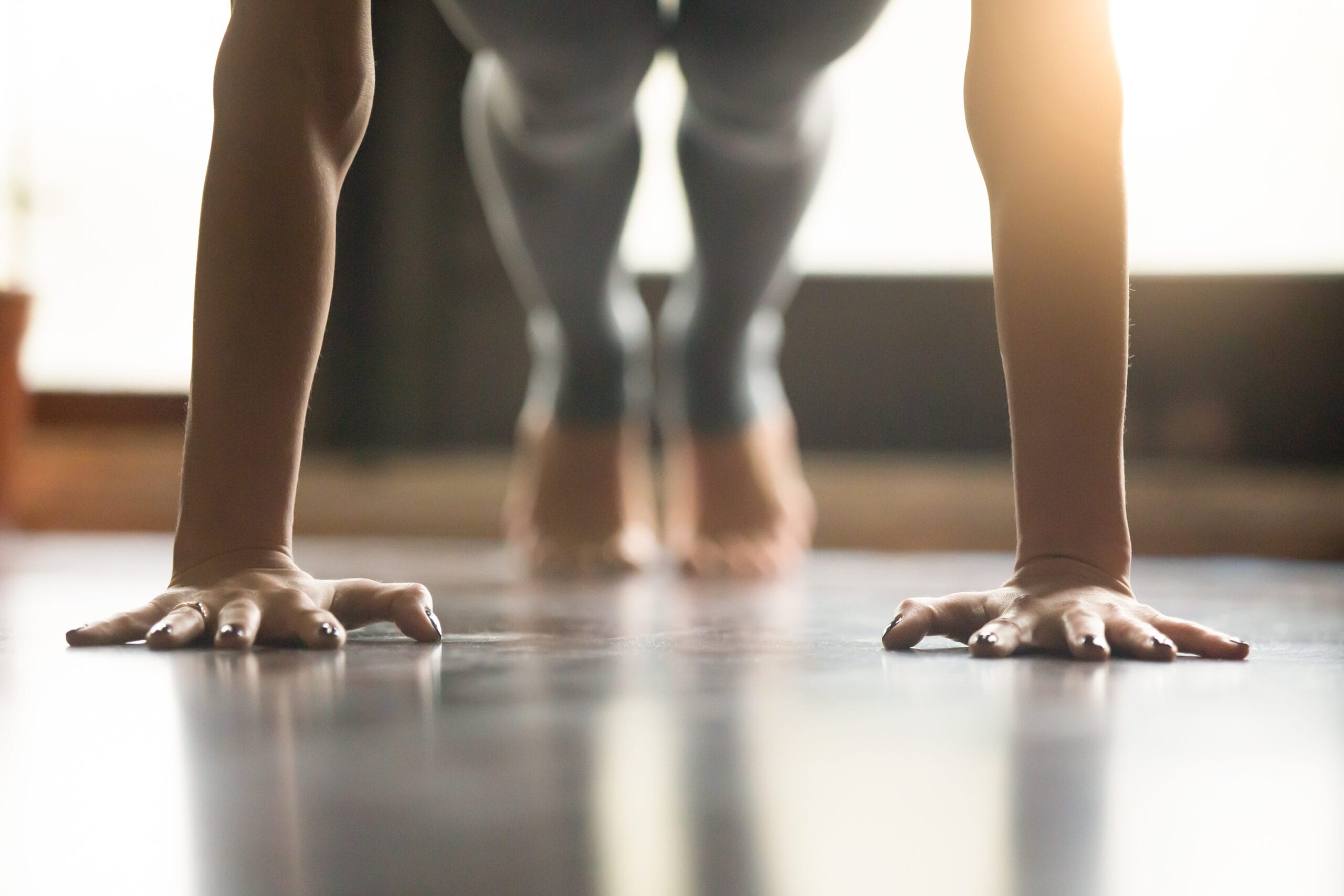
Isometric exercises are used often in the rehab setting, but are they actually effective for healthy individuals like you and me? Yes! I didn’t even have to stop and think about that one. Isometric exercises are a safe and effective way to add intensity and variety to your workout. Regardless of what body part or exercise you’re doing, I’m here to tell you that adding isometric reps will be beneficial.
But don’t take my word for it on blind trust alone (although I appreciate it if you really trust me that much). Allow me to explain my reasoning- And then I challenge you to try some of the moves discussed below and tell me that isometrics can’t be effective!
What Are Isometric Exercises?
Before we get too far ahead of ourselves, let’s make sure we are all talking about the same thing. Technically speaking, an isometric exercise is an exercise in which the primary muscle doesn’t shorten (or lengthen) during the contraction. That is, there is no joint movement, or any movement at all for that matter, during the exercise.
For a more technically definition, check out Wikipedia.
Isometrics are just one form of exercise, and probably the form we use the least. A lot of us use concentric exercises, these are the common moves we use when we are lifting weights. During concentric exercises, the muscle shortens as the joint moves.
The opposite of concentric exercises are eccentric exercises– these occur when the muscle lengthens during the contraction. Also known as “negatives”, concentric exercises are a great way to strengthen muscles because you can really heavy up your load.
Isometrics fall in the middle between concentric and eccentric exercises. A common misconception is that isometrics are easier since there is no movement. Do you think planks are easy? I don’t. Planks are a great example of an isometric core exercise. What about an isometric wall squat? Yeah, definitely not easy either.

Although we tend to think of isometric exercises as body weight moves, there’s nothing stopping us from using external resistance isometrically. With dumbbells or resistance bands we can turn any move into an isometric exercise if we want to.
But this may be a reason so many folks in the strength training world don’t give isometrics the respect they deserve. The thought being that if you aren’t moving weight, you aren’t gaining strength. I disagree.
Gaining strength is all about applying load to a muscle and making that muscle adapt. With time and repetition, that muscle will adapt by growing stronger, whether that load is applied concentrically or isometrically.
I’m not here to say isometrics are better than concentric or eccentrics at building strength. Nope, I’m not going there. Good ol’ fashioned weight lifting has been around for a long time and it’s been proven to be highly effective.
I’m just saying isometrics are another tool we can use to add variety to our workouts and push our muscles in a different way. I’m a firm believer that variety is a good thing when it comes to exercise. We shouldn’t be doing the same exercises week in and week out. Our bodies get used to what we are doing and they adapt to the point where they don’t have to work as hard anymore- which means we hit plateaus and make less gains- which ultimately makes us less motivated to exercise.
Ok, I’m off my soap box. Long story short, isometrics are just another form of exercise we can use to effectively strengthen our bodies and burn calories. Now, let me prove to you why isometrics can make a great addition to your regular workout routine.
5 Reasons Isometric Exercises Are Effective
#1 They Are Safe
This is the reason we use them so often in therapy following surgery (think rotator cuff repair). Often in these cases, the patient has range of motion restrictions from the surgeon. We want to start strengthening the muscles immediately, but we aren’t allowed to move the joint. What can we do? Isometrics!
The same principle can be applied to healthy-ish folks working out in their home gyms. If you have a known shoulder or knee problem, some exercises may be painful. With the use of isometrics, you can find a comfortable position and hold it for a given time to work the muscle without pain.
Isometric wall squats are a great example. Standard squats give people a lot of knee issues. Whether it’s due to incorrect form or patellar gliding issues, the result is the same- pain. Holding a wall squat isometrically in a position that is comfortable allows you to work your quads and glutes safely without having to be limited by discomfort.
#2 No Equipment Necessary
If you are working out at home, you may have limited access to equipment. You may have no equipment at all, that’s ok. Isometrics can be done with zero equipment, all you need is your body. But are there really enough bodyweight isometric exercises you can do to make a workout out of them?
Hmm, I think so, what do you think?
- Isometric wall squat (wall sit)
- Isometric push up
- Plank
- Side plank
- Isometric bridge
- Isometric lunge
- Downward-facing dog
And these are just a few examples of isometric exercises you can do without equipment. You may also notice that these moves don’t require much floor space either- helpful if you have limited room for your workouts.
If you are into yoga, a lot of those moves and postures are isometric exercises as well.
#3 Can Improve Strength
If you do have some equipment, like dumbbells or resistance bands, you can take your isometric exercises to a whole new level. Bodyweight exercises are great, but with some external resistance you can turn any exercise into an isometric move. You can also see more impressive strength gains by using resistance with your isometric moves.
Research has shown that isometric moves can increase the strength at that particular joint angle. For example, if you are holding an isometric bicep curl at 90 deg of elbow flex, the biceps will primarily become stronger at that 90 deg angle. There will likely be some spill over in the few deg around that joint position.
But who says you can only do isometrics at one joint position?!? How about holding isometric exercises at different positions to gain strength through a larger range of motion? Sounds good to me.
Using that same bicep curl example, you could hold the position at 60 deg, 90 deg, and 120 deg. How about starting at 60 deg, and working your way up, holding each position for 30 sec? Or the reverse? Sounds like a solid bicep workout.
Here are few more exercises I think this strategy would work well with. Give them a try and see what you think:
- Shoulder flys
- Chest press
- Shoulder press
- Skull crushers
- Pec flys
- Lat pull down (resistance bands)
You can also combine concentric exercise with isometric holds. Knock out a few dumbbell curls and then hold one rep isometrically. Works well for a burnout or finisher.
#4 Improve Flexibility
Isometric exercises can also be used to improve flexibility while you are improving strength. I’m coming back to the yoga example for this point. Downward-facing dog is one of the more famous yoga poses and it is used to improve flexibility and strength at the same time.
For those of you unfamiliar, it’s kinda like holding a plank and a hamstring stretch at the same time. It’s tough. You’re going to really feel it in your shoulders. But it’s also a great way to improve the flexibility in your hamstrings and calves.
There are a ton of other yoga (and Pilates) positions that are designed to improve strength and flexibility at the same time. A lot of use tend to neglect stretching because, well, it isn’t much fun to do. But isometric exercises can give us a more engaging way to stay loose and reduce our chance of injury.
#5 Can Lower Blood Pressure
According to the American Heart Association, isometrics can also help with lowering your blood pressure. A 2013 study suggested that 4 weeks of isometric hand exercises lowered participants’ blood pressure by an average of 10%. That seems pretty amazing that hand exercises where able to effectively lower blood pressure, imagine what full body isometrics could do.
We all know that cardiovascular exercise, like walking or riding a bike, is a great way to lower your blood pressure. Now you can take a step farther and add a few isometric moves to your routine.
Final Thoughts
We discussed what isometric exercises are and a handful of reasons why isometric exercises are effective. They are safe to perform and can effectively improve your strength and flexibility. They can even help you lower your blood pressure. Throw in the fact that you can do them anywhere and I would say we have a pretty good argument for their value.
One last point I’d like to make is that isometric exercises can really improve your athletic performance. I keep going back to the isometric wall squats or wall sits because it’s a great leg exercise that has a lot of sport performance related value.
If you are a skier or basketball player, you need to be doing isometric wall squats. They are going to improve your leg strength and endurance and give you an instant advantage over anyone not doing them. Think about the position you are in while you ski- you are basically doing an isometric squat the whole time!
Makes sense to train functionally to improve your performance doesn’t it?
That about does it. If you aren’t convinced by now that isometric exercises are an effective way to improve strength and function, then I challenge you to try some of the exercises listed above! I have a feeling you will be a believer afterwards.
Good luck.


